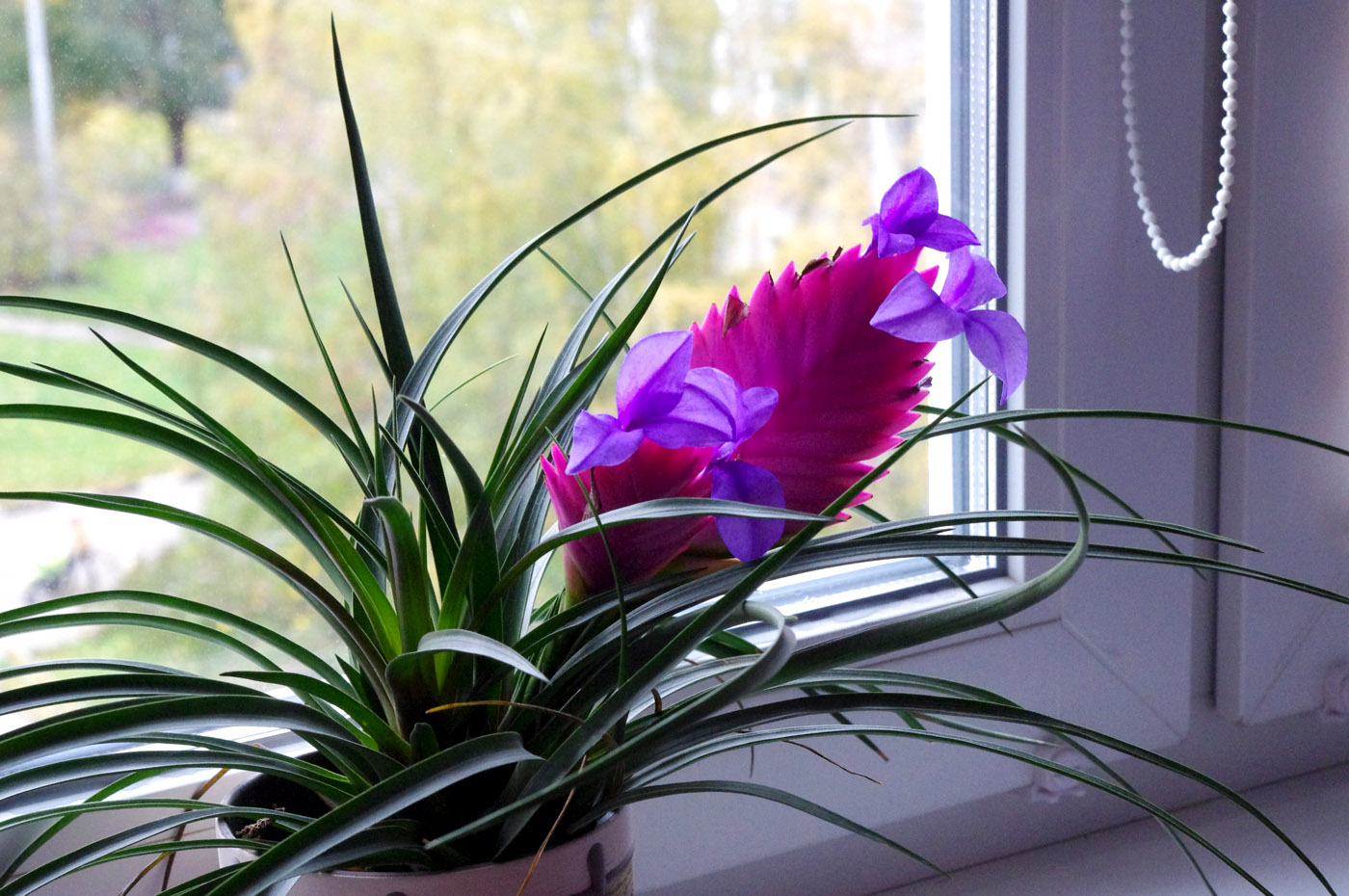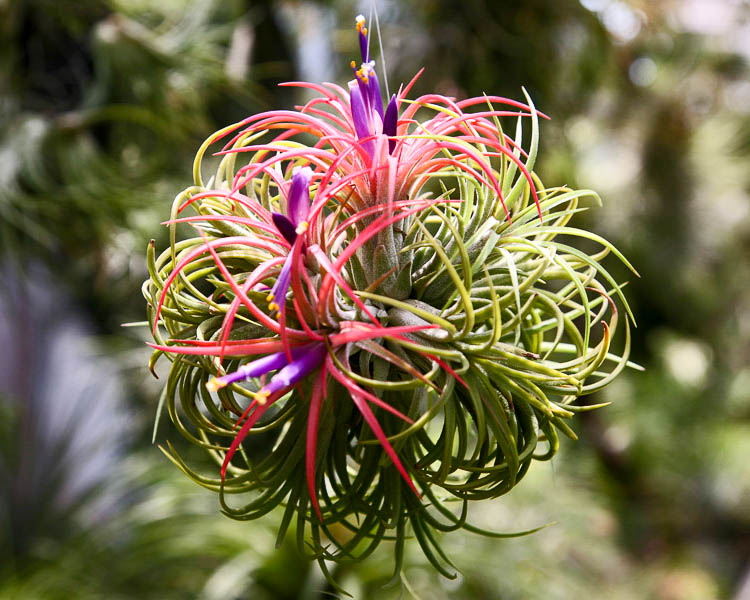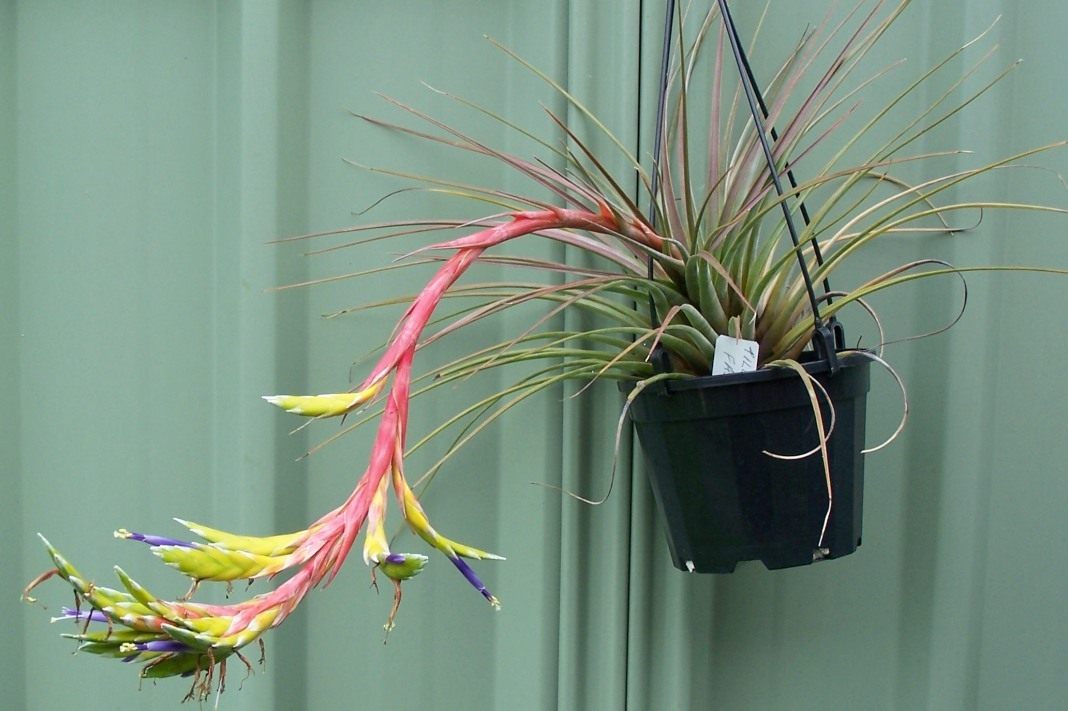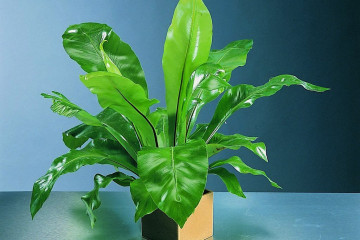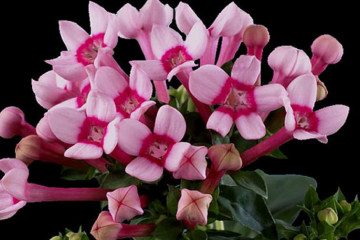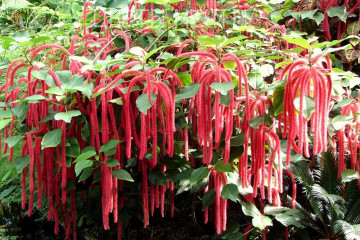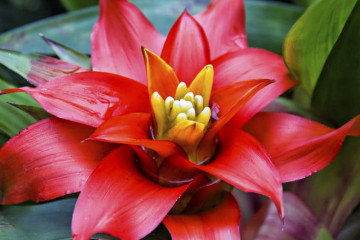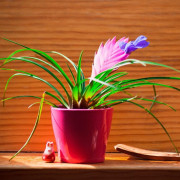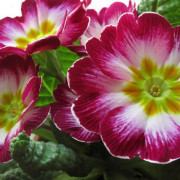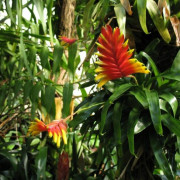Tillandsia flower - home care
Content:
Tillandsia has about four hundred species and grows in a variety of natural areas. The process of adapting to weather changes has contributed to the formation of different varieties of flowers, depending on climatic conditions.
Tillandsia flower: varieties, features of home care
This exotic flower belongs to the bromeliad species. A herbaceous flowering plant, depending on the variety, can be annual or perennial. By the way of growth, it can be terrestrial or epiphytic. The varieties that grow at home are unpretentious. The appearance and color of the plant is very diverse, depending on the variety.
History of appearance
Swedish biologist Karl Linnaeus named the plant after Finnish scientist Elias Tillands, who founded the Botanical Garden in Finland.
Homeland of the plant
The flower originated in the South of America. Received its distribution in Chile, Mexico. The flower grows in mountainous and marshy areas, tropics, semi-deserts, savannas. In the wild, the plant attaches its root system to rocks or trees. In Russia, it is grown only in an artificial environment.
Tillandsia: home care
For growth and development, it is enough to provide conditions close to natural.
Temperature
Tillandsia loves warmth, but heat is destructive for her. In summer, the permissible temperature barrier ranges from +20 to +28 ℃. In the cold season, the temperature should not drop below +17 ℃. The room where the flower is located should be regularly ventilated.
Lighting
Direct exposure to sunlight should be avoided, otherwise the leaves will get burned, which will lead to the death of the plant. The flower needs an even distribution of light in space. In winter, an additional light source is installed.
Watering
The degree and frequency of hydration of tillandsia depends on its variety. For species with a strong root system, moderate watering over a period of time is suitable. In the summer, the soil in the pot must be kept constantly moist. On hot days, the flower is watered twice a day with settled water. In winter, the frequency of soil moisture is reduced so that its upper layer has time to dry out before the next watering.
Spraying
Suspended varieties need to be regularly sprayed, since due to the lack of a root system, the plant receives the substances necessary for development and growth through the leaves. In winter, the flower is sprayed with warm water. During the formation and opening of buds, spraying is stopped. In the summer, a warm shower is required every two weeks.
Humidity
The air in the room where the plant is kept is humidified by at least 60%. Therefore, containers with water or a special humidifier are installed near the pot.
Priming
Store-bought orchid soil mix is suitable for tillandsia. To prepare the soil yourself mix:
- one piece of leafy land;
- one part of peat;
- one part of coarse sand;
- one part sphagnum with the addition of crushed charcoal.
It is recommended to sterilize the soil before planting. At the bottom of the pot, drainage must be laid at least a third of the total volume.
Top dressing
Epiphytic varieties (without root system) are fed with nutrient solutions. Spray them on the leaves once every two weeks. The fertilizer is mixed with water in a 1: 4 ratio. Potted species are fertilized during the period of active growth with liquid root fertilizers twice a month from spring to autumn.
You can not use ordinary fertilizing, as well as use organic matter - they are poisonous to the plant. Tillandsia is fed with liquid fertilizers for the Bromiley family.
When and how it blooms
Tillandsia blooms unusually and beautifully. First, it releases an ear on which bright buds bloom alternately. The color range and size of the buds are different for different varieties.
Types of flowers
Ear buds bloom one by one. Bracts are pink, purple, red, yellow, orange, lilac, thanks to which tillandsia always looks dazzling.
Flower shapes
On tillandsia, a bright peduncle is formed, usually raspberry-pink in the form of an ear. Each flower has three petals in bright blue, blue or purple shades. Flowers bloom in turn. During this period, they can open up to 20 pieces. They fade quickly. As they dry, they are cut off.
Flowering period
It blooms in summer, less often it can happen in autumn and even in winter. The bud opening process can take up to two months or more. At this time, the moisture and condition of the leaves are monitored.
Pruning
Only dried or damaged leaves are removed. In general, the tillandsia plant does not need pruning. When young shoots grow up, the main peduncle dies off and dries up completely. Then young shoots are disconnected from the mother flower and planted separately.
Reproduction
How Tillandsia reproduces:
- vegetatively;
- in a generative way.
Children
Lateral shoots are called babies. Their intensive growth occurs during the period of full formation and opening of the buds. One plant can give from three to eight daughter shoots.
Shoots with a hardened root system are planted separately. The soil is prepared from peat and sand mixed in equal proportions.
If only one baby has formed, then the faded plant is removed to make room for a daughter shoot. Young tillandsia will delight with flowers in two / three years.
Seeds
For germination of seeds, a moistened mixture of sand and peat is used. Seeds are scattered over the ground, without sprinkling on top. The container is covered with glass or foil and placed in a bright, warm place. Sprouts are formed after 25-30 days. Flowers appear only after five years.
Transfer
The plant is removed from an old container, removing the soil from the roots, and placed in a wide and shallow pot. A thick layer of drainage is laid at the bottom, with the addition of charcoal.
Possible growing problems
Tillandsia flower requires the creation of favorable microclimatic conditions. Pests can appear in a plant that is weakened by transplantation or improper conditions.
Pests
The main danger for tillandsia is scale insects and scale insects. They are removed from the plant by wiping the leaves with soapy water. In case of severe infection, special insecticides are used.
Other problems
Plants of the Bromeil family are subject to fungal and viral diseases. Black spots appear on the leaves. To cure the plant, you need to cut off the affected leaves.
Main problems:
- The appearance of brown spots on the leaves is due to improper watering. It is necessary to correct the humidification and use only filtered water.
- The lack of bud and flower formation occurs when there is insufficient lighting and insufficient air humidity. The plant is moved to a bright room, an additional light source and an air humidifier are installed.
- Leaves may turn brownish due to sunburn. In hot weather, the pot with the plant must be shaded, protecting it from direct sunlight.
- Flower decay occurs if tillandsia is planted in ordinary soil. Or due to excess moisture in the soil. It is treated with a complete replacement of the soil.
- The leaves are twisted and dried up - there is not enough moisture, the plant should be sprayed more often.
Views
There are several hundred types of flowers in nature. Only a few of them can be adapted for potting.
Atmospheric (epiphytic)
Plants with lush leaves, with little or no root system. Thick scales on the leaves help the plant to feed and maintain water balance. The main varieties of this type:
- Tillandsia usneoides (tillandsia usneoides) has a second name "Louisiana moss". Thin threadlike leaves with gray scales. It is used to create interior compositions on stands, snags for tillandsia. Caring for tillandsia usneiform at home is simple: regular watering and temperature conditions from +18 ℃ to +21 ℃.
- Tillandsia ionantha violet-flowered (tillandsia ionantha) has silvery leaves, a blue-violet flower. During bud formation, the leaves take on a reddish tint.
- Tillandsia "Medusa's head" (Tillandsia caput medusae) has the shape of a bulb with adjoining leaves, which are bent to the sides at the top. The inflorescences are colored red.
- Tillandsia xerographica is the largest species. Grows up to 1 m in height. Leaves are silvery, curled at the ends. The leaf bracts are bright pink in color, and the flower itself is purple.
- Tillandsia bulbosa (Tillandsia bulbosa). Leaves are thin, long. When the plant is in bloom, the top leaves turn red and the flower takes on a lavender hue.
- Tillandsia Cotton Candy (Tillandsia Cotton Candy) is 12 cm high, rosette diameter is about 17 cm. It adapts to the apartment temperature regime, in winter it tolerates a drop in degrees to +12 ℃. Requires infrequent watering. Needs a lot of light, grows even in direct sunlight.
Potted
Endowed with green narrow leaves in the form of a rosette. Spike-shaped inflorescences with bright bracts are formed:
- Tillandsia blue cyanea (Tillandsia cyanea) has a rosette of grass-like leaves, the color changes from red to brown-striped. The flowers are blue or light blue, the bracts are painted in bright lilac or pink tones.
- Tillandsia Anita. Its scaly leaves are narrow and spiky. They form a rosette, in the center of which, on a short stem, there is a blue flower with pink or lilac bracts.
- Tillandsia Lindenii (Tillandsia lindenii) is distinguished by the large size of the inflorescence, as well as the color of the bracts. In the inflorescence, they are deep red or light pink, and the flowers are blue and have a white eye.
Tillandsia is an exotic plant that easily adapts to various conditions. To grow a beautiful and well-developed flower, you need to properly care for it. Then he will add variety to the interior, emphasize its peculiarity.
